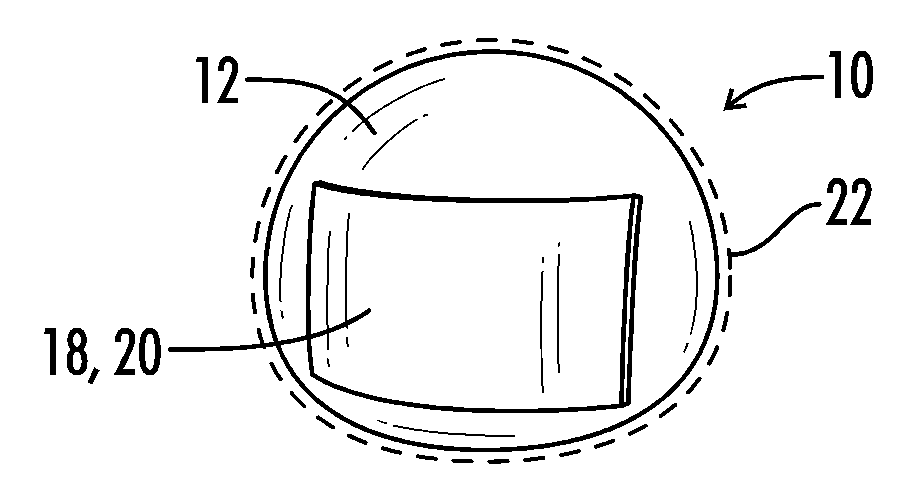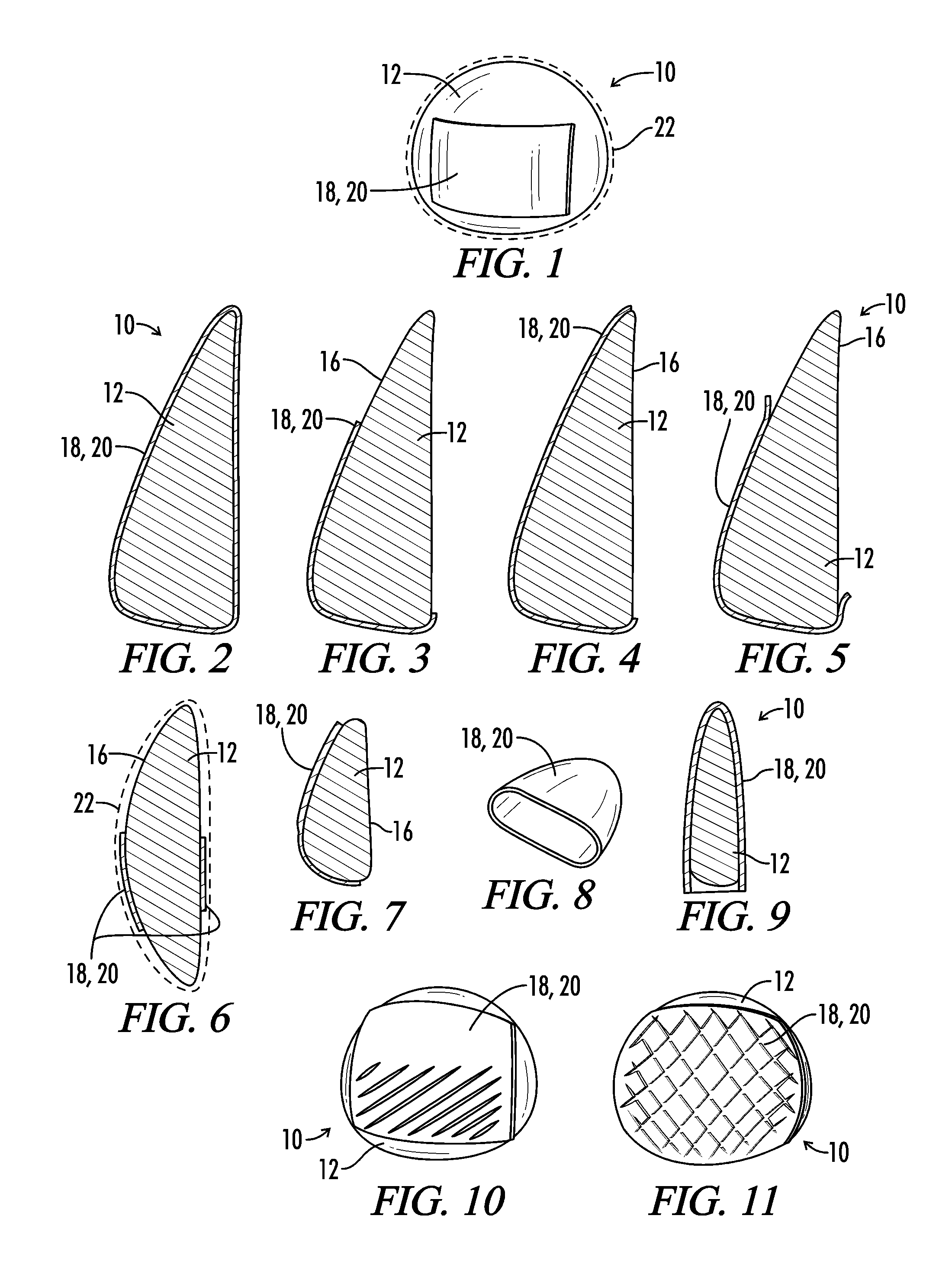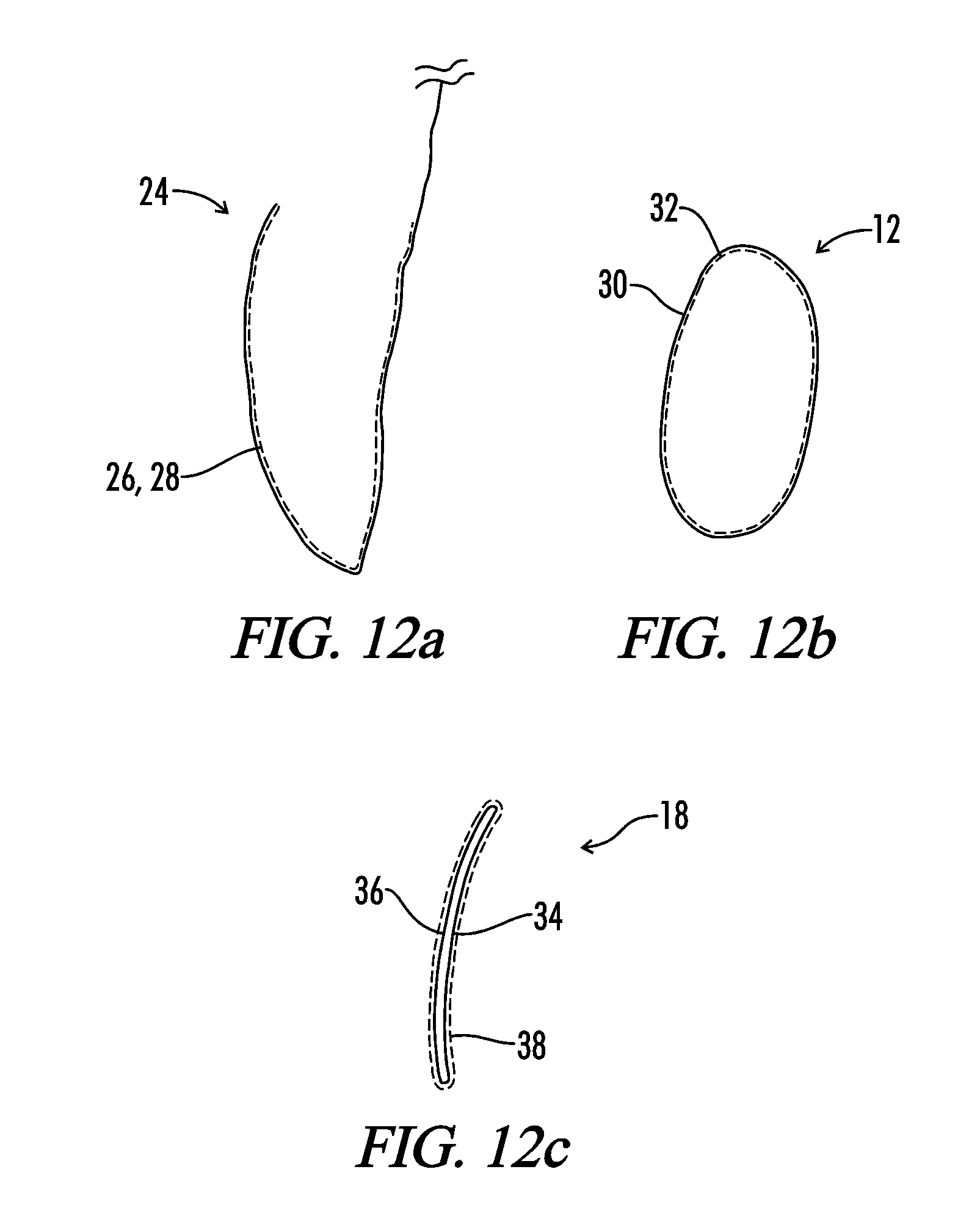Interfaced Medical Implant Assembly
a technology of medical implants and components, applied in the field of medical implants, can solve the problems of many unwanted effects, unacceptably high surgical correction or reoperation rates, capsular contracture, etc., and achieve the effects of preventing/reducing capsular contracture, reducing and/or eliminating capsular contracture, and promoting regenerative repair rather than scar formation
- Summary
- Abstract
- Description
- Claims
- Application Information
AI Technical Summary
Benefits of technology
Problems solved by technology
Method used
Image
Examples
Embodiment Construction
[0046]The present invention relates generally to a medical implant assembly 10 that prevents and / or reduces capsular contracture, and more particularly to a preferred method of creating the same. Although the assembly 10 can be any implantable prosthesis, a preferred embodiment of the present invention concerns implants used primarily for breast augmentation, revision, and reconstruction. Now referring to FIGS. 1-26, the assembly 10 includes a medical implant 12 and a biological interface 18. Although the implant 12 may be relatively non-compliant or have a firm pre-defined shape, a preferred embodiment has a medical implant 12 with a flexible silicone elastomeric shell 16 or exterior surface 16. The resilient shell 16 allows the implant to be readily deformed without compromising the integrity of the implant 12. Such a property facilitates positioning the prosthesis 12 into a host (or implant recipient). The shell 16 may be textured or smooth.
[0047]To complement the resilient shell...
PUM
 Login to View More
Login to View More Abstract
Description
Claims
Application Information
 Login to View More
Login to View More - R&D
- Intellectual Property
- Life Sciences
- Materials
- Tech Scout
- Unparalleled Data Quality
- Higher Quality Content
- 60% Fewer Hallucinations
Browse by: Latest US Patents, China's latest patents, Technical Efficacy Thesaurus, Application Domain, Technology Topic, Popular Technical Reports.
© 2025 PatSnap. All rights reserved.Legal|Privacy policy|Modern Slavery Act Transparency Statement|Sitemap|About US| Contact US: help@patsnap.com



